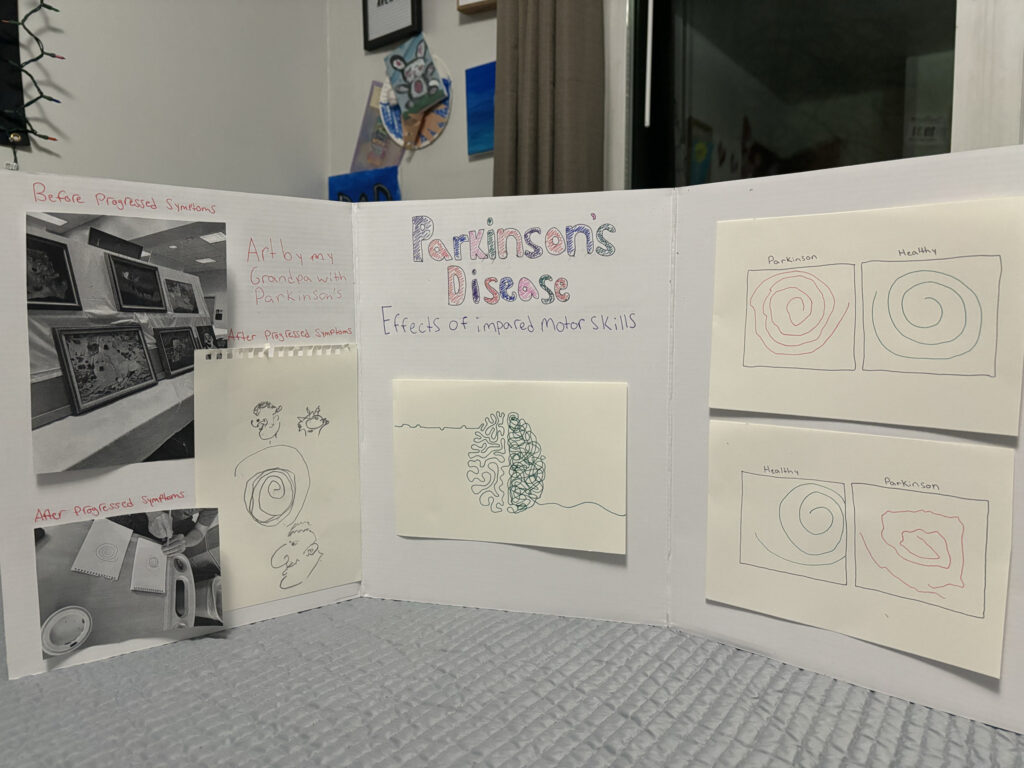
Parkinson’s disease is a chronic and progressive neurodegenerative disorder that primarily affects movement and control. Over 8.5 million people, 1% of the population over the age of 55, are affected by Parkinson’s, making it the second most common neurodegenerative disorder worldwide. It is characterized by the gradual loss of dopamine-producing neurons in the brain, particularly within the substantia nigra, a region responsible for motor control.
The exact cause of Parkinson’s disease is unknown, but it’s believed to result from a combination of complex genetic and environmental factors. Possible environmental factors include exposure to pesticides, toxins, heavy metals, or an accumulation of iron or manganese in the brain. Research indicates that the loss of dopaminergic neurons in the brain plays a central role in the onset of symptoms. Dopamine, a neurotransmitter, is critical for coordinating smooth, controlled movements. As its levels decrease, those with Parkinson’s experience tremors, rigidity, bradykinesia (slowness of movement), and postural instability, distinguishable characteristics of this disorder. Tremor is often the first noticeable sign and typically begins in one hand or foot. Rigidity refers to muscle stiffness, which can be painful and limit movement. Bradykinesia describes the slowing of voluntary movements, which can make simple tasks like walking difficult. Postural instability results in difficulty maintaining balance, increasing the risk of falls.
Parkinson’s disease primarily affects motor functions, but it also leads to a wide range of non-motor symptoms which can be just as impairing. Mood disorders such as depression and anxiety are prevalent in Parkinson’s patients, and depression is one of the earliest non-motor symptoms that can be observed.
Social cognition is the ability to process, interpret, and respond to social information, such as understanding facial expressions, emotional cues, and social norms. Impairments in social cognition can lead to significant difficulties in maintaining interpersonal relationships, which can profoundly impact the psychological well-being and quality of life of individuals affected or even those in their lives. One aspect of social cognition affected by Parkinson’s is facial emotion recognition. This impairment is visible in the early stages of this disease and impacts the ability to recognize negative emotions like anger, fear, disgust, and sadness. Lack of facial emotion recognition can lead to indifference or lack of empathy, drastically affecting relationships and decreasing quality of life.
For my project, I decided to make a poster showing the effects of the impaired motor skills that those affected by Parkinson’s disease experience. My grandpa, who was once an incredible artist, suffers from Parkinson’s disease. The once strong, active man I remember is now visibly weakened by tremors and slow movements. His once steady hands now shake uncontrollably on bad days, making even the simplest tasks challenging. For my poster, I asked him to draw me a swirl to test his ability to control the tremors. This was challenging for him as it would be for mostly all Parkinson’s patients.
Parkinson’s disease is a multifaceted disorder that extends far beyond its motor symptoms. Cognitive impairments, including deficits in attention, executive functioning, and memory, are common even in the early stages of Parkinson’s disease. Additionally, social cognitive impairments, particularly in facial emotion recognition, can significantly affect the ability of individuals with Parkinson’s to maintain relationships and manage social interactions. These changes can have profound effects on patients’ quality of life, making early identification and intervention crucial.
References
Anne Carien Slomp, van, Boertien, J. M., Marleen, Teus van Laar, & Spikman, J. M. (2023). Impaired facial emotion recognition in relation to social behaviours in de novo Parkinson’s disease. Journal of Neuropsychology. https://doi.org/10.1111/jnp.12341
Mammen, J., Tyo, M., Cadorette, J., Adams, J., Xiao, Y., Stephenson, D., & Bale, C. (2024). Shibboleth Authentication Request. Oclc.org. https://www-nature-com.uaf.idm.oclc.org/articles/s41598-024-71555-4
Rukavina, K., Mulholland, N., Corcoran, B., Magdalena Krbot Skoric, Staunton, J., Rota, S., Pavlos Zinzalias, Wu, K., Fieldwalker, A., Bannister, K., Rizos, A., & K Ray Chaudhuri. (2023). Musculoskeletal pain in Parkinson’s disease: Association with dopaminergic deficiency in the caudate nucleus. European Journal of Pain, 28(2), 244–251. https://doi.org/10.1002/ejp.2172
Schapira, A. H. V. (1999). Science, medicine, and the future: Parkinson’s disease. BMJ, 318(7179), 311–314. https://doi.org/10.1136/bmj.318.7179.311
Smith, L., & Parr-Brownlie, L. (2024). Shibboleth Authentication Request. Oclc.org. https://research-ebsco-com.uaf.idm.oclc.org/c/qg64q2/viewer/html/3ehaqj2cjf
Progress Pictures



Parkinson’s disease is a chronic progressive neurodegenerative disease that affects the life of over 8.5 million people with the main target being those over the age of 55. The disease occurs because of a depletion in dopamine-synthesizing neurons in the substantia nigra. This causes symptoms of motor inabilities like tremors, rigidity, bradykinesia, and postural instability. The cause of Parkinson’s disease is believed to be due to genetic predispositions as well as environmental factors like being exposed to toxins, pesticides, and heavy metals. Parkinson’s disease also causes other non-motor impairments like mood disorders such as depression or anxiety. The disease also causes social cognition impairments such as the ability to recognize facial expressions and emotional cues, and many people with the disease struggle to understand negative feelings such as anger, fear, and sadness. This makes it very hard for people with Parkinson’s disease to have social interactions and can lead to damaging relationships. Overall these symptoms often lead to a lesser quality of life within the patients and can be very detrimental to them and those around them.